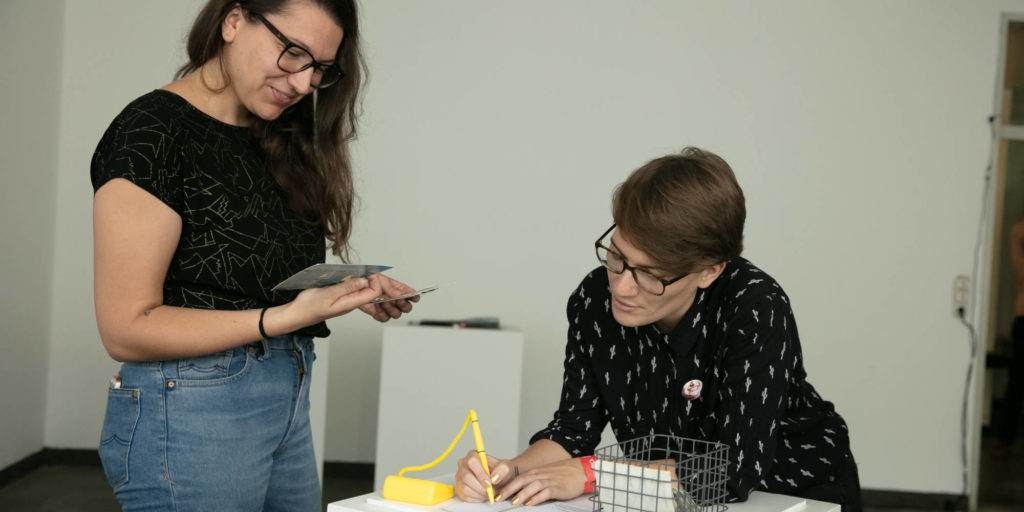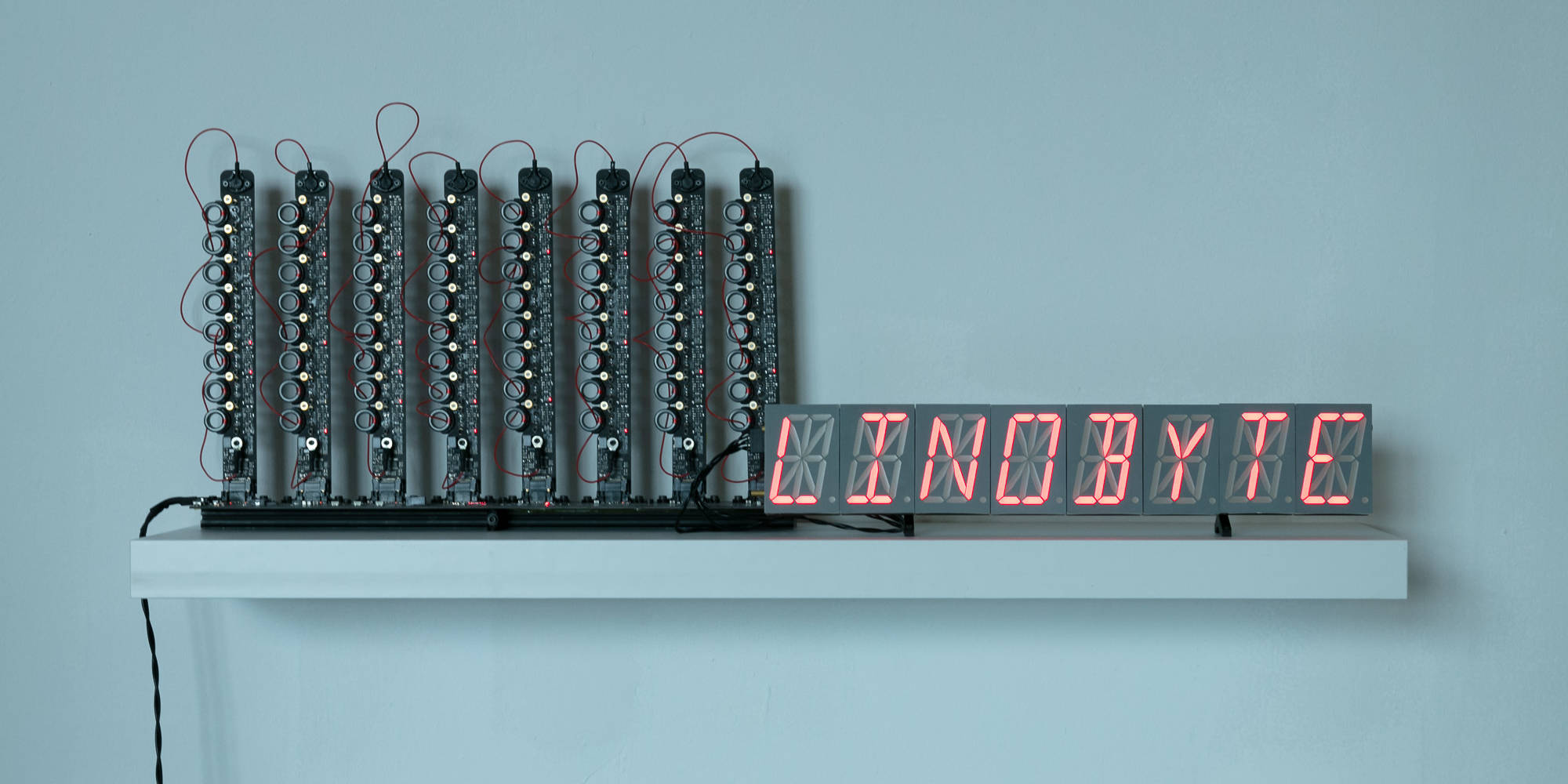As computational devices evolve, more tools and interfaces are built between the user and the machine. This allows us to complete increasingly complex tasks without having to focus on understanding the nuances of the machine. While this movement is overall positive, one of the drawbacks is that people no longer learn the fundamental processes which allow the tool to work. In addition, by neglecting history, we forget the alternatives to the technologies that we use today – forgotten alternatives that may once have been the status quo. Understanding them would give us a broader view of what we have now, how they superseded their ancestors and what their pitfalls are – important knowledge for those who design possible futures.

It is with these preoccupations in mind that Linobyte came into existence. It combines the explanation of how bits, bytes, and chars work, with a hands-on experience of creating Core Rope ROMs: memories that were written by weaving a wire through ferrite cores.


